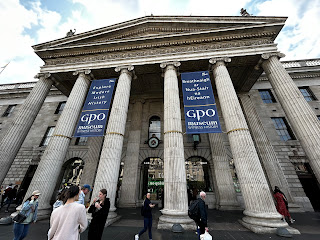Waverley Blog #1
 |
| The Battle of Culloden (1746) |
Throughout this text, Sir Walter Scott utilizes various characters, actions, and pieces of dialogue to emphasize the rift between England and Scotland. However, Scott also uses these techniques to show the internal conflict Waverley faces regarding what side he is on (Hanoverian or Jacobite). Before readers are even introduced to Waverley, it is noted that Scott's choice in naming Edward Waverley was a critical part of the story. Scott claims that the name of a character gives the audience expectations and that his choice of Waverley gives "little of good or evil", leaving Waverley's character to be determined only as the story continues (3). However, even with this choice of name, Scott shows us that Waverley will ultimately have to make a difficult choice (or choices) by the end of the story even though his choice wavers throughout the novel.
One of Scott's first references to the political rift between Scotland and England and Waverley's personal divide is shown through the characters of Everard and Richard. Everard, Edward Waverley's uncle, was a Jacobite supporter, whereas Richard, Waverley's father is a Hanoverian. Upon Richard's decision to disregard "the hereditary faith of Sir Everard in high church and the House of Stuart", Everard removed Richard as the next heir of the Waverley estate and replaced him with Edward (7). Now, as the inheritor of the Waverley estate, Edward has both Jacobite and Hanoverian ties. The disconnect between these two figures in Waverley's life represents the beginning of the internal conflict Waverley will face throughout his journey to Scotland.
With Edward Waverley wavering between the support of England and Scotland, Scott introduces various situations to emphasize the internal struggle Waverley is facing. Waverley also has to decide between the allure of Flora and the security of Rose.




Comments
Post a Comment